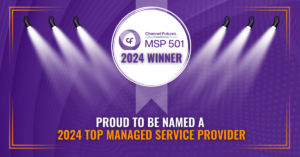
IT consulting experts in Los Angeles recommend strong internal security procedures to offset pernicious and expanding cybercrime–which is already a multi-trillion dollar industry. One of the most effective means of defense involves internal best practices.
Protecting Operations from the End-User Level
IT consulting experts in Los Angeles advise businesses to center IT security protocols around how internal employees interface with technologies. Such personnel are defined as the “end user”, and the truth is, most security breaches come through their missteps . You need best practices, and everyone needs to know them; consider the following tactics:
Design Regularly-Updated Cybersecurity Best Practices Documentation
IT services providers in Los Angeles commonly advise businesses that are tech-rich to make security best-practices documentation centralized and consolidated. This documentation should be easy to read, easy to find, and continuously updated as new realities of operation develop.
Make End-User Education Core to Security Paradigms
Tech experts will additionally advise you to educate clients on a rolling basis. If you can have a monthly security refresher course, that’s excellent. More realistically, quarterly refreshers are feasible. At the very least, at the beginning and middle of a fiscal year, you should educate your personnel pertaining to new best practices in tech.
Test Applied Strategies for Effectiveness
Once you’ve made documentation integral to operations and facilitated recurring end-user education, you need to test the strategies you’ve put into place to see how effective they are.
Perhaps design a faux-phishing email and see if employees catch it, or let it slide through. If they catch it, reward them. If they don’t, then have a meeting about it.
Facilitating More Secure Operations
An IT consulting firm in Los Angeles like Advanced Networks can help you determine security vulnerabilities and best practices to counteract them. Testing applied security strategies, making internal education core to security, and designing centralized, consolidated best practices documentation are all helpful steps. Contact us for more information.




